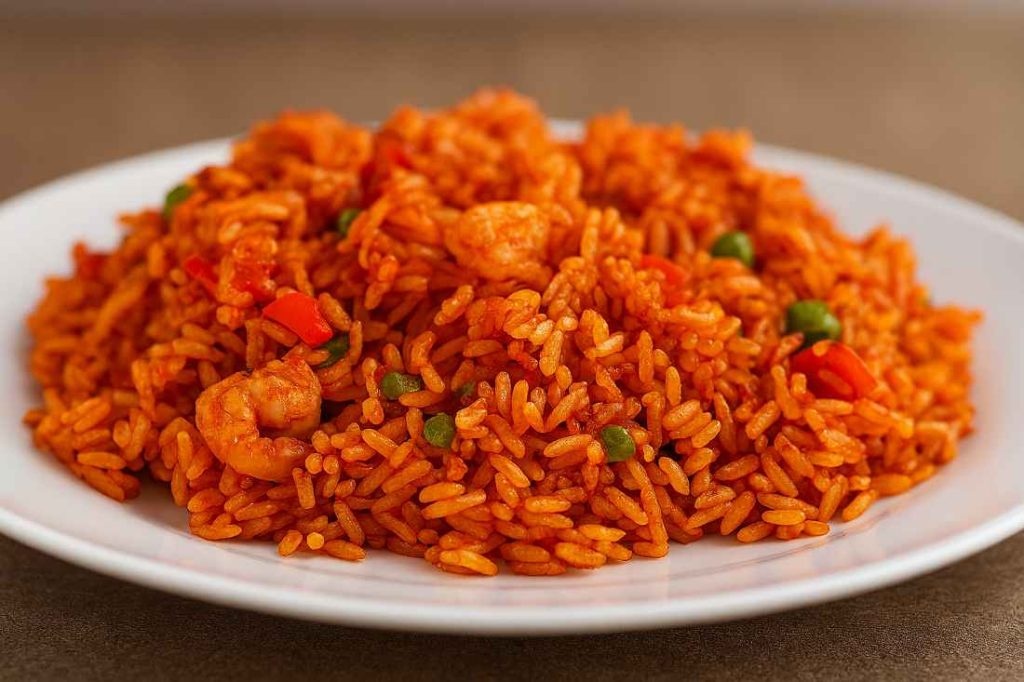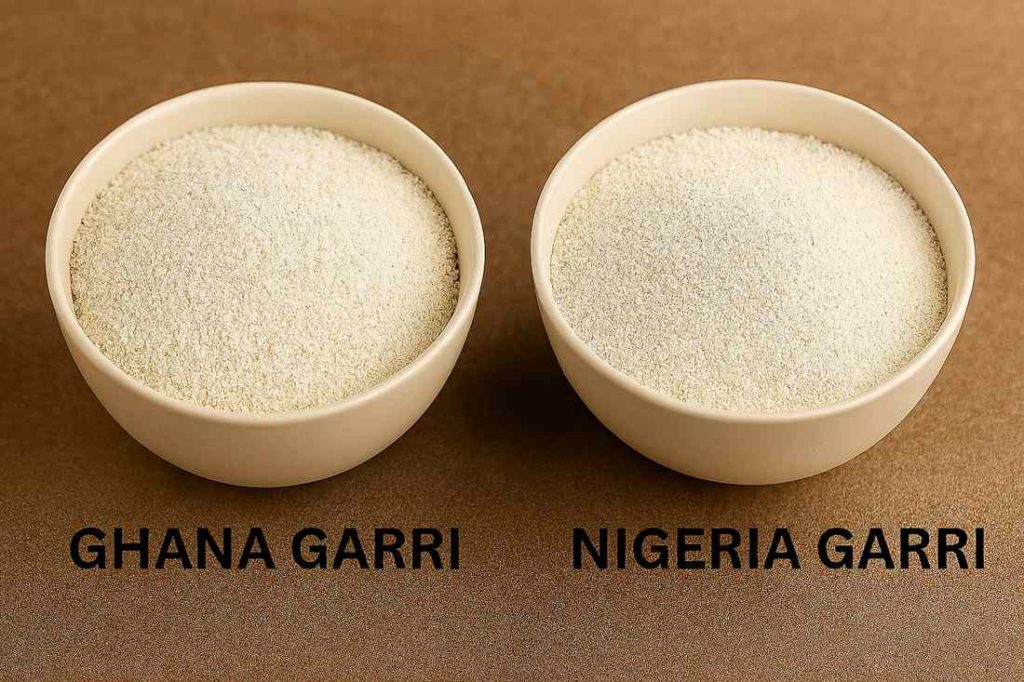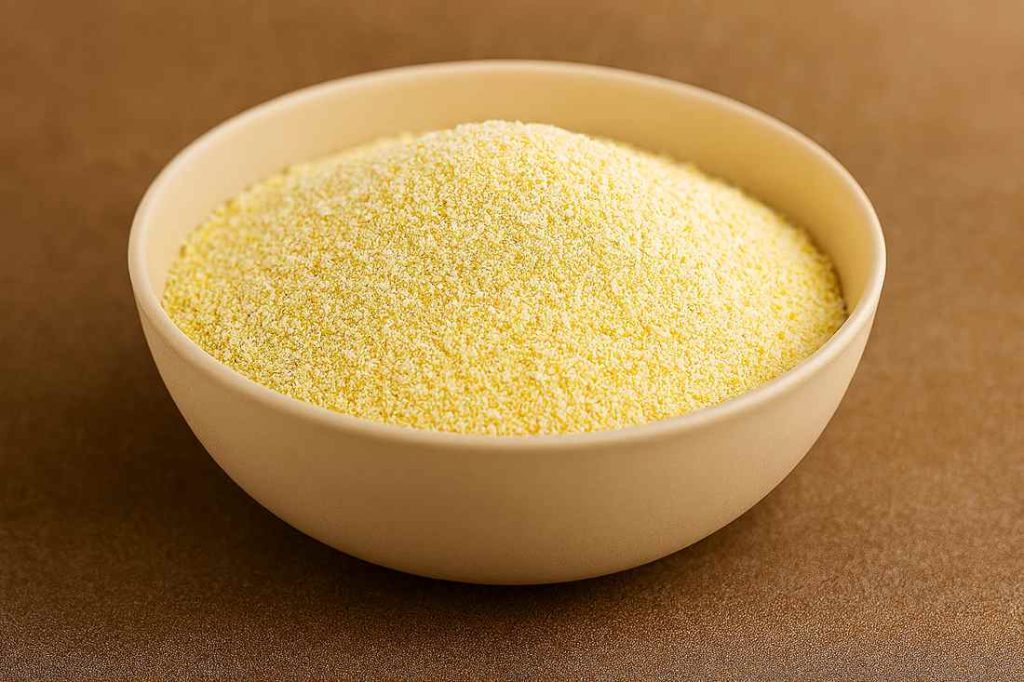
Like two neighbours living in the same building and fighting about everything, but secretly in love, Nigeria and Ghana have been at war with each other since Anansi’s head became bald.
From football to music to whose accent sounds “finer,” there’s always been something to bicker about between these two frenemies. Most times, these debates are merely conversation starters before the two parties go to bed together… or the altar.
For decades, we’ve watched Nigeria and Ghana argue over who makes the better jollof. Not knowing what jollof is in 2025 is like asking if you can wear Crocs to owambe. Jollof is the tomato-blessed rice dish that’s basically the Beyoncé of West African dishes.

Today’s fight is not over Jollof, though. It seems while everyone’s busy dragging each other over jollof, the real food fight quietly went down in the background — and Ghana has already been declared the winner!
I laugh in cassava.
Ghana Garri vs. Nigerian Garri
For ages, West Africa and the entire world have been captivated by the heated, delicious showdown over who crafts the best jollof. But beneath that grand rivalry was a hidden food fight that happened in cold temperatures.
Welcome to the 2025 edition of The Garri Games:
Garri 101: The Cassava That Could
So, what exactly is garri (or gari, if you’re feeling a little international)?
It’s not just food — it’s a lifestyle. A humble, fine-grained miracle made from cassava that’s peeled, grated, fermented, and fried till creamy white or golden, if the mood is Benin. Garri is West Africa’s edible version of versatility: survival snack, thirst-quencher, and heartbreak companion (ask any broke university student).
It’s as adaptable as your favourite aunty who sells both provisions, building materials and wisdom.
You can soak garri in water, turn it into eba for soup, or simply munch on it raw if you’re part of the Ijebu Pirate gang (this group don’t need milk, sugar, or apology—just a rubber of garri and audacity).
Who has the best garri?

Both Nigeria and Ghana swear they do it best — but while they may start with the same cassava, they don’t arrive at the same destination. It’s like Burna Boy and Black Sherif: same energy source, different vibrations.
Nigeria’s garri game: reliable, but not quite crunchy enough
Like all things Naija, Nigeria’s garri scene is bold and diverse, no doubt. The country practically has a garri for every mood.
First up, White Garri — the everyday MVP. Fermented for 2 to 3 days, it’s dependable, mellow, and humble. Like that older friend who’s seen the world for all its pretensions and could no longer be bothered.
Then there’s Yellow Garri, fried with palm oil for that sunny, golden glow. It’s smooth, rich, and loves to show off in eba form, usually side by side with okra or egusi. Basically, garri with a tan and a little sass. But be careful — this garri does not believe it’s garri. It even goes to meetings with the big guys (pounded yam, semo and fufu)
And of course, Ijebu Garri — the rebel. Fermented for up to a week (because why not), it’s sour, sharp, and dramatic. One spoonful, and boom — Nollywood plot twist. It’s got personality, sure, but loses marks in the crunch department.
Ghana’s Garri: Cool, Crispy, and Unbeatable
Now enter Ghanaian garri — the cool kid who doesn’t need to try hard.
Here’s the secret: After fermentation, Ghanaians sundry the cassava before roasting. This small extra step makes a huge difference — it’s like skincare for cassava. The result? Garri so crispy, you can hear the sound when you feel it.
Flavour-wise, it’s mild and clean — refined, less tangy, more refreshing. The kind of taste that whispers, not screams.
For garri soaking, Ghanaians pour it into cold water, add milk, sugar, peanuts, maybe ice, and boom — instant tropical cereal. Tap. Swirl. Slay. When boiled into eba, Ghana garri produces eba so viscous and starchy that it could make amala jealous.
Why Ghana Wins: A story of crunch and taste
Let’s call it like it is: Nigerian garri is dependable — the Toyota Corolla of cassava. Gets the job done, no drama.
But Ghanaian garri? That’s Benz. Smooth, sleek, innovative, and irresistibly crispy. Sure, Ijebu’s sourness is bold, but who asked for a surprise tang when you could have both sweetness and joyful crispiness in one?
Quick versatility check?
Eba? Ghana’s got it—smooth, stretchy, photogenic.
Garri soakings? Ghana invented the glow-up: bissap, ginger, coconut milk—call it garri couture.
Snack mode? Ghanaian garri + kuli kuli + chilled Coke = national anthem in edible form.
Sorry, Naija — Ghana’s garri didn’t just show up to play. It changed the rules of the game.
Note: Nigeria’s yellow garri did not attend this showdown. A card from the PR team read: “I’m too busy for all this!”

Final Verdict: Ghana Takes the Trophy!
In this season of Garri Games, Ghana doesn’t just win — it snaps. Whether you’re Team Soak or Team Eba, one truth stands tall: garri unites us in crunchy, starchy harmony.
If you’ve never tried Ghanaian garri? Time to level up. Grab a bag, pour some cold milk, and get ready for a taste that’s pure victory — crispy, refreshing, and unapologetically Ghanaian!
Akwaaba!



The ragdoll physics in wacky flips are absolutely hilarious. One moment you’re flipping perfectly, the next you’re crashing in style. That’s what makes it so addictive!
hilarious